Arts in Primary
0 likes218 views
This short document promotes the creation of presentations using Haiku Deck, an online presentation tool. It includes two sample stock photos and encourages the viewer to get started making their own Haiku Deck presentation to share on ║▌║▌▀ŻShare.
1 of 19
Download to read offline
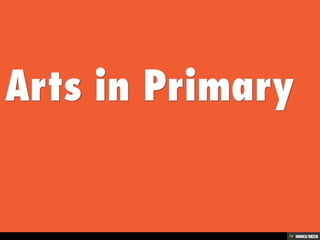

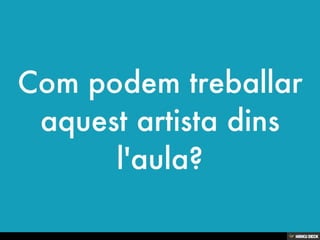


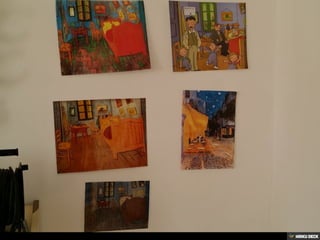
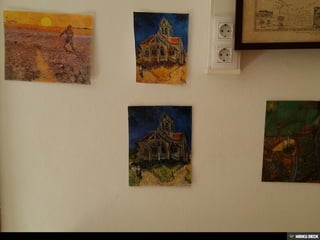
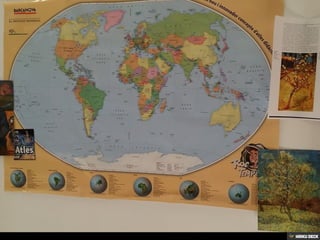


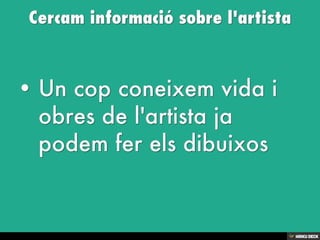
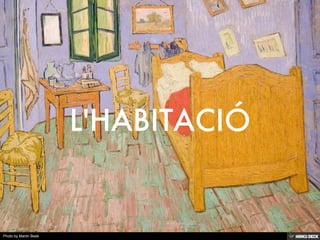
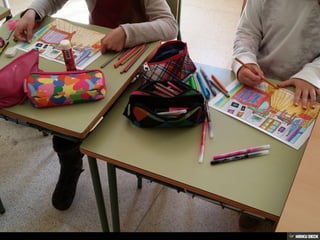
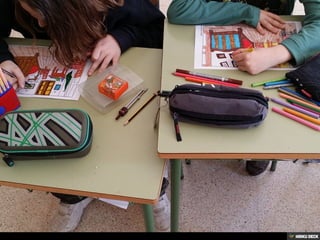
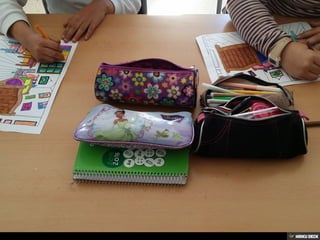
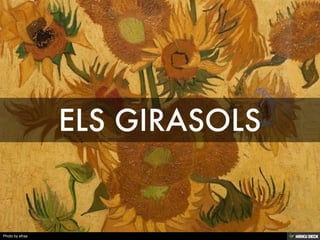
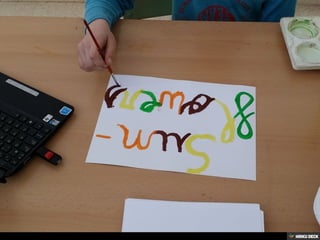
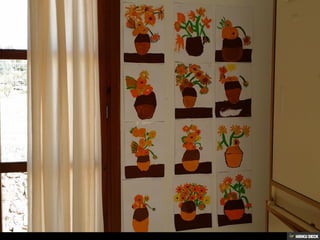
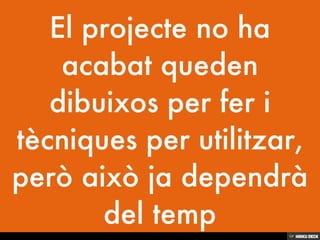
Ad
Recommended
PSICOLOGIA
PSICOLOGIAdayanacaldera05
╠²
This short document promotes creating presentations using Haiku Deck on ║▌║▌▀ŻShare. It encourages the reader to get started making their own Haiku Deck presentation by clicking the "GET STARTED" button at the bottom. In just one sentence, it pitches presentation creation software.Psicologia
PsicologiaRaul Tapia Paternina
╠²
This short document promotes creating presentations using Haiku Deck on ║▌║▌▀ŻShare. It encourages the reader to get started making their own Haiku Deck presentation by clicking the "GET STARTED" button at the bottom. In just one sentence, it pitches Haiku Deck as a tool for making creative presentations.Entrevista a libretista @jctroncosol
Entrevista a libretista @jctroncosolManuela Navarrete
╠²
This short document promotes the creation of Haiku Deck presentations on ║▌║▌▀ŻShare by providing an example Haiku Deck presentation and stating that the reader may feel inspired to create their own. It encourages the reader to get started making a Haiku Deck presentation by clicking a button labeled "GET STARTED".═č▒╩░š▒§░õ┤Ī
═č▒╩░š▒§░õ┤ĪScarlet Yessenia Torres
╠²
This short document provides three example photos credited to different photographers and encourages the reader to get inspired to create their own Haiku Deck presentation on ║▌║▌▀ŻShare. It displays photos by Historias Visuales, I'mBatman, and Didier Alb├Īn M. without captions and ends by telling the reader to get started making their own presentation.waw
wawzahramanar
╠²
This short document promotes creating presentations on Haiku Deck and sharing them on ║▌║▌▀ŻShare. It encourages the reader to get started making their own Haiku Deck presentation by clicking a button to get started. A photo credit is given for the image used.Detect vitiligo in early stage and take a right way to treat it
Detect vitiligo in early stage and take a right way to treat itvitiligo pedia
╠²
This short document promotes the creation of Haiku Deck presentations on ║▌║▌▀ŻShare and provides a stock photo of a woman holding a laptop. It encourages the reader to get started making their own Haiku Deck presentation by providing a button labeled "GET STARTED".TDS ON SALE OF IMMOVABLE PROPERTIES
TDS ON SALE OF IMMOVABLE PROPERTIESSelva Kumar
╠²
This short document promotes the creation of Haiku Deck presentations on ║▌║▌▀ŻShare. It encourages the reader to get started making their own Haiku Deck presentation by providing a clickable "GET STARTED" prompt. A Haiku Deck presentation allows for the visual storytelling of ideas through images, text, and animation.WelcomeToUkraine
WelcomeToUkrainesashshok
╠²
This short document promotes creating presentations on Haiku Deck and sharing them on ║▌║▌▀ŻShare. It includes a photo credit and a call to action encouraging the reader to get started creating their own Haiku Deck presentation.cULOAREA ANULUI 2015
cULOAREA ANULUI 2015Irina Constantin
╠²
This short document promotes the creation of Haiku Deck presentations on ║▌║▌▀ŻShare by providing an inspiring photo and caption that encourages the reader to get started making their own presentation. It suggests the reader can create concise, visually engaging presentations using Haiku Deck on the ║▌║▌▀ŻShare platform.Untitled Presentation
Untitled PresentationVesna Matanovic
╠²
This short document promotes the creation of presentations using Haiku Deck on ║▌║▌▀ŻShare. It features a stock photo and text that encourages the reader to get started making their own Haiku Deck presentation. A brief call to action is given to start creating presentations on the ║▌║▌▀ŻShare platform.Rafael
RafaelRaff_507
╠²
This short document promotes creating presentations using Haiku Deck on ║▌║▌▀ŻShare. It encourages the reader to get started making their own Haiku Deck presentation by clicking the "GET STARTED" button at the bottom. A photo credit is given to "blentley" but no other details are provided about the content of the photo or document.EL UNIVERSO
EL UNIVERSOclaracarracedo
╠²
This short document promotes the creation of presentations using Haiku Deck on ║▌║▌▀ŻShare. It features photos credited to three different photographers and suggests that the reader may be inspired to create their own Haiku Deck presentation on ║▌║▌▀ŻShare.happyyy birthday
happyyy birthdaywassolol
╠²
This short document promotes creating presentations using Haiku Deck on ║▌║▌▀ŻShare. It features a stock photo and encourages the reader to get started making their own Haiku Deck presentation by clicking a button labeled "GET STARTED". In a few words, it advertises the ability to easily create presentations on ║▌║▌▀ŻShare using Haiku Deck.Academic Vocabulary Assessments
Academic Vocabulary AssessmentsAmanda Fox-Markley
╠²
This short document promotes the creation of presentations using Haiku Deck on ║▌║▌▀ŻShare. It includes a photo credit and a call to action encouraging the reader to get started making their own Haiku Deck presentation.Can I do that?
Can I do that?Mel Sherrin
╠²
This short document promotes the creation of presentations using Haiku Deck on ║▌║▌▀ŻShare. It features a stock photo and the caption "Inspired?" along with a call to action to "GET STARTED" making your own Haiku Deck presentation on ║▌║▌▀ŻShare.Question 3
Question 3willthomasmedia
╠²
This short document promotes the creation of presentations using Haiku Deck on ║▌║▌▀ŻShare. It features a stock photo and a caption encouraging the reader to get started making their own Haiku Deck presentation. In just 3 words, the document promotes presentation creation software.drogheda
droghedaagnewemma
╠²
This short document promotes the creation of presentations using Haiku Deck, an online presentation tool. It includes photos from two stock photo sites to illustrate presentations. The document encourages the reader to get started making their own Haiku Deck presentation by uploading it to ║▌║▌▀ŻShare.Untitled Presentation
Untitled PresentationAhi Fulgence Affro
╠²
This short document promotes creating presentations using Haiku Deck on ║▌║▌▀ŻShare. It features a stock photo and encourages the reader to get started making their own Haiku Deck presentation by clicking a button labeled "GET STARTED". In a few words, it pitches presentation software.Untitled Presentation
Untitled PresentationAhi Fulgence Affro
╠²
This short document promotes creating presentations using Haiku Deck on ║▌║▌▀ŻShare. It features a stock photo and encourages the reader to get started making their own Haiku Deck presentation by clicking a button labeled "GET STARTED". In just a few words or sentences, potential users are invited to explore the presentation tool.Untitled Presentation
Untitled PresentationAhi Fulgence Affro
╠²
This short document promotes creating presentations using Haiku Deck, a tool for making slideshows. It features a stock photo and encourages the reader to get started making their own Haiku Deck presentation by sharing it on ║▌║▌▀ŻShare. In just a few words, it pitches the idea of easily designing slideshows and sharing them online.Prueba
Pruebaanalaura_fdz
╠²
This short document promotes creating presentations using Haiku Deck on ║▌║▌▀ŻShare. It features a stock photo and encourages the reader to get started making their own Haiku Deck presentation by clicking a button labeled "GET STARTED". In a few words, it advertises the ability to easily create presentations on ║▌║▌▀ŻShare using Haiku Deck.PSYCHOLOGY A2: Clinical Characteristics of Schizophrenia
PSYCHOLOGY A2: Clinical Characteristics of Schizophreniaelliefennt
╠²
This short document promotes creating presentations using Haiku Deck, an online presentation tool. It features a stock photo of a library and text encouraging the reader to get started making their own Haiku Deck presentation to share on ║▌║▌▀ŻShare. In just a few words, it pitches the idea of using Haiku Deck to easily make and share online presentations.How to learn Piano Fast
How to learn Piano Fastnurmeisler
╠²
This short document promotes the creation of Haiku Deck presentations on ║▌║▌▀ŻShare. It features a stock photo and text that reads "Inspired? Create your own Haiku Deck presentation on ║▌║▌▀ŻShare!" along with a button prompting the reader to "GET STARTED".Uber vs. Lyft
Uber vs. LyftMatthew J. Ronay
╠²
This short document promotes creating presentations using the Haiku Deck app and sharing them on ║▌║▌▀ŻShare. It includes photos credited to different photographers and encourages the reader to get started making their own Haiku Deck presentation.ESPOCH
ESPOCHAle De Mora
╠²
This short document promotes the creation of presentations using Haiku Deck on ║▌║▌▀ŻShare. It contains a photo credit and a call to action encouraging the reader to get started making their own Haiku Deck presentation on ║▌║▌▀ŻShare.Problem-Solution Proposal
Problem-Solution Proposalklowry46
╠²
This short document is a photo from Truthout.org showing a person holding a sign that says "Inspired? Create your own Haiku Deck presentation on ║▌║▌▀ŻShare!". The photo encourages the viewer to make their own Haiku Deck presentation and share it on ║▌║▌▀ŻShare. It promotes using Haiku Deck presentation software and the ║▌║▌▀ŻShare platform.VIBRANT GUJARAT
VIBRANT GUJARATZealVora24
╠²
This short document encourages sharing beauty through photography on freestock.ca. It dares readers to share beauty by taking photos and making them available for others. A call to action invites readers to create their own presentations on ║▌║▌▀ŻShare.5 reasons why the Dollar's Rise is good for consumers
5 reasons why the Dollar's Rise is good for consumersSalmaPage
╠²
This short document promotes creating presentations on Haiku Deck and sharing them on ║▌║▌▀ŻShare. It includes a stock photo and a call to action to get started making your own Haiku Deck presentation. In just 3 words, the document encourages the reader to try making presentations.Research proposal fatin (First Draft)
Research proposal fatin (First Draft)fatinismail89
╠²
This document discusses digital art education practices in primary schools. It aims to prepare students for the current art world by integrating digital technologies and multimedia into art lessons. Currently, most Malaysian primary schools teach art using traditional materials like pencils and paint. However, introducing digital art can help engage students and make the subject more interesting for them. The document examines how teaching with and without digital art affects student creativity. It also looks at the technologies teachers use and students' interests in digital versus conventional art. The objectives are to investigate the impact on creativity and students' interests in artworks produced through different methods.Music and School Magazine Analysis
Music and School Magazine AnalysisKhalid
╠²
The document discusses various elements that typically appear on magazine covers, including the masthead, central image, cover lines, and barcode. It provides examples of how these elements are used on music and school magazine covers. Specific elements that are described include the masthead identifying the magazine company, a central celebrity image to promote the issue, and one-line descriptions to entice readers. Photos and descriptions of actual magazine covers are included to illustrate these cover design elements.More Related Content
What's hot (20)
cULOAREA ANULUI 2015
cULOAREA ANULUI 2015Irina Constantin
╠²
This short document promotes the creation of Haiku Deck presentations on ║▌║▌▀ŻShare by providing an inspiring photo and caption that encourages the reader to get started making their own presentation. It suggests the reader can create concise, visually engaging presentations using Haiku Deck on the ║▌║▌▀ŻShare platform.Untitled Presentation
Untitled PresentationVesna Matanovic
╠²
This short document promotes the creation of presentations using Haiku Deck on ║▌║▌▀ŻShare. It features a stock photo and text that encourages the reader to get started making their own Haiku Deck presentation. A brief call to action is given to start creating presentations on the ║▌║▌▀ŻShare platform.Rafael
RafaelRaff_507
╠²
This short document promotes creating presentations using Haiku Deck on ║▌║▌▀ŻShare. It encourages the reader to get started making their own Haiku Deck presentation by clicking the "GET STARTED" button at the bottom. A photo credit is given to "blentley" but no other details are provided about the content of the photo or document.EL UNIVERSO
EL UNIVERSOclaracarracedo
╠²
This short document promotes the creation of presentations using Haiku Deck on ║▌║▌▀ŻShare. It features photos credited to three different photographers and suggests that the reader may be inspired to create their own Haiku Deck presentation on ║▌║▌▀ŻShare.happyyy birthday
happyyy birthdaywassolol
╠²
This short document promotes creating presentations using Haiku Deck on ║▌║▌▀ŻShare. It features a stock photo and encourages the reader to get started making their own Haiku Deck presentation by clicking a button labeled "GET STARTED". In a few words, it advertises the ability to easily create presentations on ║▌║▌▀ŻShare using Haiku Deck.Academic Vocabulary Assessments
Academic Vocabulary AssessmentsAmanda Fox-Markley
╠²
This short document promotes the creation of presentations using Haiku Deck on ║▌║▌▀ŻShare. It includes a photo credit and a call to action encouraging the reader to get started making their own Haiku Deck presentation.Can I do that?
Can I do that?Mel Sherrin
╠²
This short document promotes the creation of presentations using Haiku Deck on ║▌║▌▀ŻShare. It features a stock photo and the caption "Inspired?" along with a call to action to "GET STARTED" making your own Haiku Deck presentation on ║▌║▌▀ŻShare.Question 3
Question 3willthomasmedia
╠²
This short document promotes the creation of presentations using Haiku Deck on ║▌║▌▀ŻShare. It features a stock photo and a caption encouraging the reader to get started making their own Haiku Deck presentation. In just 3 words, the document promotes presentation creation software.drogheda
droghedaagnewemma
╠²
This short document promotes the creation of presentations using Haiku Deck, an online presentation tool. It includes photos from two stock photo sites to illustrate presentations. The document encourages the reader to get started making their own Haiku Deck presentation by uploading it to ║▌║▌▀ŻShare.Untitled Presentation
Untitled PresentationAhi Fulgence Affro
╠²
This short document promotes creating presentations using Haiku Deck on ║▌║▌▀ŻShare. It features a stock photo and encourages the reader to get started making their own Haiku Deck presentation by clicking a button labeled "GET STARTED". In a few words, it pitches presentation software.Untitled Presentation
Untitled PresentationAhi Fulgence Affro
╠²
This short document promotes creating presentations using Haiku Deck on ║▌║▌▀ŻShare. It features a stock photo and encourages the reader to get started making their own Haiku Deck presentation by clicking a button labeled "GET STARTED". In just a few words or sentences, potential users are invited to explore the presentation tool.Untitled Presentation
Untitled PresentationAhi Fulgence Affro
╠²
This short document promotes creating presentations using Haiku Deck, a tool for making slideshows. It features a stock photo and encourages the reader to get started making their own Haiku Deck presentation by sharing it on ║▌║▌▀ŻShare. In just a few words, it pitches the idea of easily designing slideshows and sharing them online.Prueba
Pruebaanalaura_fdz
╠²
This short document promotes creating presentations using Haiku Deck on ║▌║▌▀ŻShare. It features a stock photo and encourages the reader to get started making their own Haiku Deck presentation by clicking a button labeled "GET STARTED". In a few words, it advertises the ability to easily create presentations on ║▌║▌▀ŻShare using Haiku Deck.PSYCHOLOGY A2: Clinical Characteristics of Schizophrenia
PSYCHOLOGY A2: Clinical Characteristics of Schizophreniaelliefennt
╠²
This short document promotes creating presentations using Haiku Deck, an online presentation tool. It features a stock photo of a library and text encouraging the reader to get started making their own Haiku Deck presentation to share on ║▌║▌▀ŻShare. In just a few words, it pitches the idea of using Haiku Deck to easily make and share online presentations.How to learn Piano Fast
How to learn Piano Fastnurmeisler
╠²
This short document promotes the creation of Haiku Deck presentations on ║▌║▌▀ŻShare. It features a stock photo and text that reads "Inspired? Create your own Haiku Deck presentation on ║▌║▌▀ŻShare!" along with a button prompting the reader to "GET STARTED".Uber vs. Lyft
Uber vs. LyftMatthew J. Ronay
╠²
This short document promotes creating presentations using the Haiku Deck app and sharing them on ║▌║▌▀ŻShare. It includes photos credited to different photographers and encourages the reader to get started making their own Haiku Deck presentation.ESPOCH
ESPOCHAle De Mora
╠²
This short document promotes the creation of presentations using Haiku Deck on ║▌║▌▀ŻShare. It contains a photo credit and a call to action encouraging the reader to get started making their own Haiku Deck presentation on ║▌║▌▀ŻShare.Problem-Solution Proposal
Problem-Solution Proposalklowry46
╠²
This short document is a photo from Truthout.org showing a person holding a sign that says "Inspired? Create your own Haiku Deck presentation on ║▌║▌▀ŻShare!". The photo encourages the viewer to make their own Haiku Deck presentation and share it on ║▌║▌▀ŻShare. It promotes using Haiku Deck presentation software and the ║▌║▌▀ŻShare platform.VIBRANT GUJARAT
VIBRANT GUJARATZealVora24
╠²
This short document encourages sharing beauty through photography on freestock.ca. It dares readers to share beauty by taking photos and making them available for others. A call to action invites readers to create their own presentations on ║▌║▌▀ŻShare.5 reasons why the Dollar's Rise is good for consumers
5 reasons why the Dollar's Rise is good for consumersSalmaPage
╠²
This short document promotes creating presentations on Haiku Deck and sharing them on ║▌║▌▀ŻShare. It includes a stock photo and a call to action to get started making your own Haiku Deck presentation. In just 3 words, the document encourages the reader to try making presentations.Viewers also liked (9)
Research proposal fatin (First Draft)
Research proposal fatin (First Draft)fatinismail89
╠²
This document discusses digital art education practices in primary schools. It aims to prepare students for the current art world by integrating digital technologies and multimedia into art lessons. Currently, most Malaysian primary schools teach art using traditional materials like pencils and paint. However, introducing digital art can help engage students and make the subject more interesting for them. The document examines how teaching with and without digital art affects student creativity. It also looks at the technologies teachers use and students' interests in digital versus conventional art. The objectives are to investigate the impact on creativity and students' interests in artworks produced through different methods.Music and School Magazine Analysis
Music and School Magazine AnalysisKhalid
╠²
The document discusses various elements that typically appear on magazine covers, including the masthead, central image, cover lines, and barcode. It provides examples of how these elements are used on music and school magazine covers. Specific elements that are described include the masthead identifying the magazine company, a central celebrity image to promote the issue, and one-line descriptions to entice readers. Photos and descriptions of actual magazine covers are included to illustrate these cover design elements.Codes an coventions of a font magazine cover
Codes an coventions of a font magazine coversarahtaimour
╠²
The document provides information on the typical codes and conventions used on magazine covers, including the selling line, masthead, issue date, main cover line, main image, buzzwords, additional cover lines, and bar code. It analyzes examples of different magazine covers, noting the placement and formatting of these standard elements. The masthead is usually centered and overlaps the main image. Cover lines are smaller than the masthead but larger than additional text. Images relate to the magazine's genre and use mid-shots. Puffs advertise offers and bar codes include identifying information.Detailed Lesson Plan in Arts for Primary Level
Detailed Lesson Plan in Arts for Primary Leveljanehbasto
╠²
The lesson plan aims to teach pre-school students about different shapes and colors through activities like singing, identifying shapes and colors in pictures, drawing shapes on the board and coloring them in. The teacher will motivate students with a song about colors, present pictures of different shapes and their colors, have students practice identifying shapes and colors, and evaluate their learning by having them identify different shapes.Elements & Principles of Design
Elements & Principles of DesignZ M
╠²
The document defines various artistic elements and concepts used in visual art including:
- Line: Different types of lines including outlines, contours, expressive, sketch, and calligraphic lines. Characteristics of lines like width, length, direction, focus, and feeling.
- Shape: Geometric, organic, positive, negative, static, and dynamic shapes.
- Color: Primary, secondary, tertiary colors. Analogous, complementary, monochromatic, warm, and cool colors.
- Space: Positive and negative space, picture plane, composition, and focal point.
- Perspective: Linear and nonlinear perspective using techniques like size variation, overlapping, and convergence of lines.
- Texture: RealElements and Principles of Design
Elements and Principles of DesignRavi Bhadauria
╠²
The document discusses the elements and principles of design. It defines the seven basic elements of design as point, line, shape, form, space, color, and texture. It also outlines the six basic principles of design as balance, contrast, emphasis, pattern, rhythm/movement, and unity. The document provides examples and explanations of each element and principle to demonstrate their proper usage and significance in design evaluation and creation. It emphasizes that understanding these elements and principles allows designers to effectively analyze and express themselves through visual design.Elements & Principles of Art Design PowerPoint
Elements & Principles of Art Design PowerPointemurfield
╠²
The document outlines the elements and principles of art design. The elements are the basic parts that make up a work of art, including line, form, space, texture, shape, and color. The principles are concepts that affect the content and message, such as emphasis, movement, unity, rhythm, contrast, and variety. Elements structure the work and carry the message, while principles impact how the elements are used.Art Elements and Principles
Art Elements and Principlesmeier106
╠²
The document defines and provides examples of the key elements and principles of art and design, including line, shape and form, color, value, texture, space and perspective, pattern, rhythm and movement, proportion and scale, balance, unity, and emphasis. It explains concepts like how lines can be explicit or implied, how shapes are two-dimensional while forms have depth, and how color has properties of hue, value and intensity. Examples of works of art are provided to illustrate concepts like perspective, pattern, rhythm, and emphasis.Elements And Principles of Art
Elements And Principles of Artkpikuet
╠²
This document defines and provides examples of the elements and principles of art. The elements are line, color, value, shape, form, space, and texture. The principles are balance, emphasis, contrast, rhythm and movement, pattern and repetition, unity, and variety. They are the basic building blocks and organizational tools used to create visual artworks. Examples of artists who exemplified the use of these elements and principles in their works are provided.Ad
Arts in Primary
- 12. Photo by Martin Beek
- 16. Photo by efraa
- 20. Inspired? Create your own Haiku Deck presentation on ║▌║▌▀ŻShare! GET STARTED